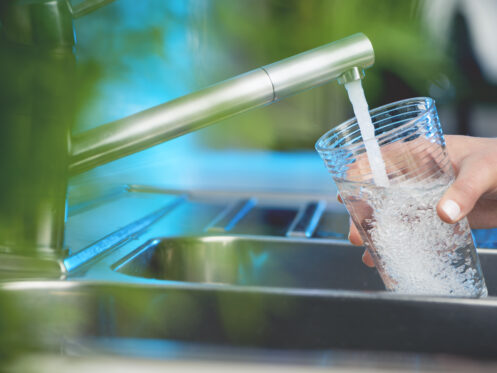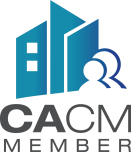When you open your faucet in your Anaheim, California, home and see clear water pouring out, it’s easy to think that the water you’re drinking is clean. While California, like many other states, takes steps to purify and treat the water that finds its way into homes and businesses, there is no denying that contaminants and pollutants are also finding their way into the public’s drinking water. As a result of the combination of pollutants people are drinking in the water, people face an increased risk of a variety of diseases, including cancer.
The most at-risk communities include small to midsize communities that need an improvement in their water treatment infrastructure to ensure safe drinking water. Some of the greatest sources of water contamination include byproducts of disinfectant chemicals, arsenic, hexavalent chromium, or chromium-6.
How Contaminated Is Drinking Water?
According to a report in 2022 by the California State Auditor, approximately 370 of the more than 7,400 water systems that are monitored and regulated by the state have contamination levels that are in excess of the maximum levels for substances known to be dangerous for human consumption. This represents about 920,000 California residents’ drinking water, or around two percent of the state’s population.
Sadly, there is a connection between a community’s social and economic status and the quality of available water. A good portion of the 370 water systems with unsafe chemical levels are in disadvantaged communities with financial needs. A major concentration is seen in the Central Valley, Imperial, and San Bernardino rural areas. Sadly, since the water is contaminated, people who live in these communities find themselves spending much of their reduced income on purchasing bottled water that they can use for things like drinking, cooking, and bathing.
People likely rely on wells in other rural parts of California for further water. This accounts for more than two and a half million people who rely on these unregulated water sources. Groundwater supplies are vulnerable to contamination from several chemicals that find their way into the soil. For many people, it is surprising to understand that California, although it is an extremely wealthy state, does not have universal access to clean drinking water.
The Desire to Purify Water Is Not New
Humans have been purifying water for countless centuries. The Greeks filtered water through gravel and sand to remove impurities. The ancient Egyptians used coagulation. This is a process where chemicals are added to the water to cause solid particles suspended in the water to adhere to each other and sink to the bottom of the water vessel, making them easy to filter. The filtering techniques used in the past were designed more to make the water palatable to drink than healthier to drink.
The Role of Modern Water Purification and Filtration
Given the prevalence of contaminants in water, homeowners need to purify and filter the water in their homes. Several options are available for purifying and filtering water, with some being more effective than others.
Boiling Water
One of the simplest methods to purify water is boiling. High temperatures can kill viruses and bacteria, removing impurities from the water. However, a drawback of boiling is that any dead microorganisms or impurities settle to the bottom. Boiling doesn’t eliminate impurities, but makes it easier to strain the water through a microporous sleeve to remove them.
Water Purifier
Water purifiers are among the most trusted forms of water purification used today. They utilize multistage processes involving UF and UV filtration, carbon, and modern water filtration technology. Good water purifiers can eliminate most impurities and chemicals in drinking water, making it safe for consumption.
Reverse Osmosis
Reverse osmosis is another excellent method for purifying water. Water is forced through a semi-permeable membrane that extracts contaminants, removing harmful impurities while retaining essential nutrients.
Chlorinated Water
Water chlorination is an emergency technique when no other options are available. Mild bleach with about five percent chlorine is added to water, serving as an oxidant that destroys microorganisms and makes the water safer for consumption.
Distillation
Distillation is a water purification process where water is heated, and the condensed water is collected. This ensures the water is completely free of contaminants. While a powerful decontaminating tool, it is not as effective as a water purifier or reverse osmosis because distillation removes all beneficial minerals and elements in the water.
Add Iodine
Iodine, a powerful chemical available as a liquid or tablet, kills bacteria and viruses. However, it can be fatal in high doses and has an unpleasant taste. It is only recommended when no better options, such as a water purifier, are available.
Solar Purification
Some people fill a plastic bottle with water, shake it to activate the oxygen, and leave it in the sunlight. This method kills bacteria and viruses, making the water safer for consumption.
Optimal Water Filtration Systems For Your Home
While some of the above-mentioned modes of purifying water, including boiling and adding chlorine or iodine, can help if you’re in a pinch, the best option for most homeowners is to have a water purification system installed in their home.
Signs that you may benefit from a water purification system include acid buildup or residue in sinks and faucets. You may notice that your water pressure is weak or unstable. You might notice visual problems or symptoms with the water. An inspection by a plumbing professional can help you choose whether or not it is wise to invest in a filtration system for your home.
Many California residents have opted for a whole-home water filtration system because they want to keep their pipes from eroding due to acidic or hard water. They want to ensure that their family has clean drinking water, or they just installed new plumbing fixtures or systems and want to keep these in the best working order. The following are some of the best water filtration systems homeowners can purchase.
An Activated Carbon System
These filtration systems do a good job of removing agricultural chemicals, chlorine, chloroform, magnesium, and other organic substances. Activated carbon works on the principle of absorption. It can be used in conjunction with other filter types for maximum toxin removal.
Ion Exchange
An ion exchange system is good for the removal of radioactive material and hard water. The filter is made of a substance that exchanges one ion for another as water flows through it. This will soften the water and help counteract some radioactive material.
Reverse Osmosis
Reverse osmosis does a great job of removing a high percentage of toxins, including fluoride, hexavalent chromium, arsenic, nitrates/nitrites, copper, radium, and salt from the water. These systems are popular because they offer a lot of bang for your buck.
If Water Goes Through, It We Do It
At Splash Plumbing, our team is large enough to carefully serve small and large jobs. We are highly committed to being honest, reliable, and multiskilled. We have the necessary equipment and materials to complete any plumbing job quickly.
Our services include general plumbing, maintenance, and repair. We offer leak detection, repair water heaters, install tankless water heaters, water purification, and backflow testing. Contact Splash Plumbing today and see for yourself what it’s like to work with professionals who put you and your family first.












